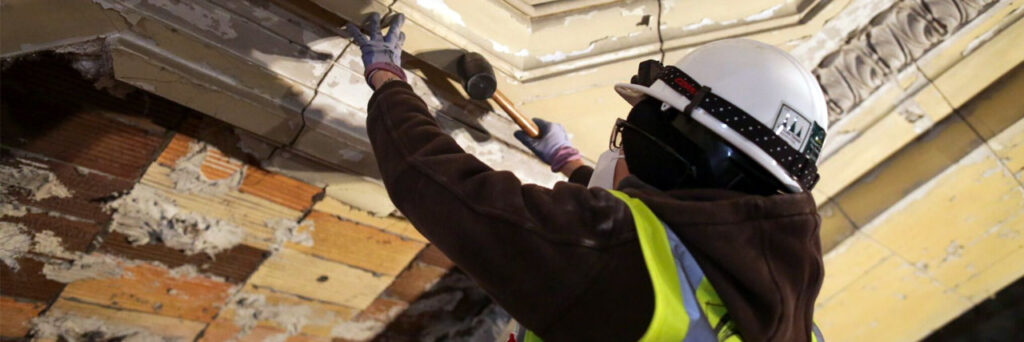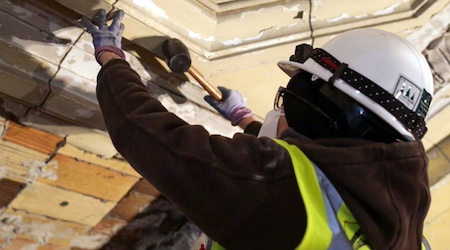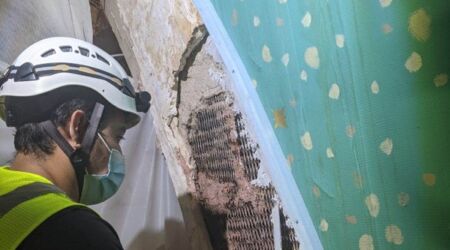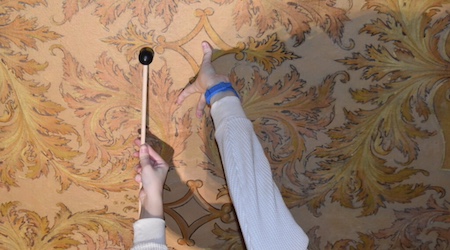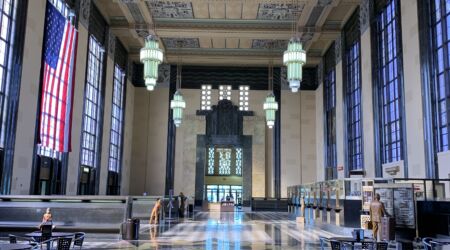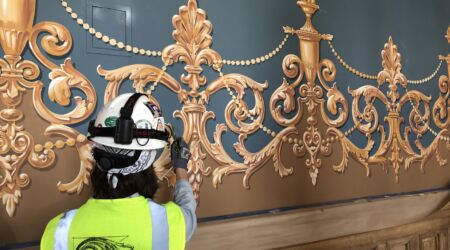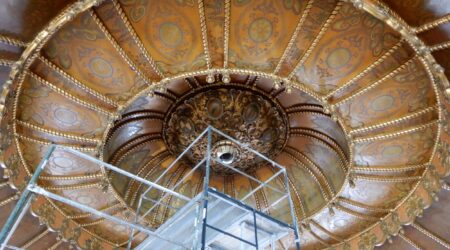Failing plaster, such as the ceiling in London’s Apollo Theatre collapsing during a packed performance or the rosette crashing down in the New York Public Library’s Rose Reading Room, highlight the need for greater attention to the safety and integrity of plasterwork.
Plaster, a versatile building material used for centuries, can be molded into various shapes and applied flat or as ornamental sculpture on surfaces. Despite its adaptability, both flat and ornamental plaster are vulnerable to damage or loss, often caused by environmental and structural factors, leading to issues like cracking, peeling, crumbling, or eventual collapse overtime.
- Inspection of Structural Aspects & Assessing Plaster Condition
Obtaining a detailed understanding of the the configuration and condition of the structure to which plasterwork is attached as well as the composition and bonding agent that was used is usually the primary objective of any plaster survey. Ideally, a plaster conservation specialist works closely with a structural engineer to investigate the root cause of any identified problem and to develop a roadmap for the appropriate stabilization, conservation, and restoration of the plasterwork.
For projects that require compliance with accepted conservation principles, practice, and the retention of as much original fabric as possible all structural and aesthetic intervention should be minimal and limited to areas where repairs are essential. In those cases, implementing a regime of monitoring and management are often preferable in lieu of more invasive interventions.
- Identification of Plaster Composition & Finishes
When plaster ornament is beyond repair or is lost, missing pieces or an entire decorative campaign can be recreated based on historical photography or research and documentation. More in depth investigation, testing, and analysis of the exact plaster composition and historic finishes is commonly involved to pinpoint appropriate composites for replicating the visual and aesthetic properties of the original plaster and decorative art.
- Preparation of a Detailed Survey Report & Preservation Plan
As part of any plaster survey, a detailed report documents the condition, construction, and safety considerations of each inspected area. It may also include further documentation outlining material composition, performance, management, access, cleaning requirements, and asbestos status.
After the incident of the failed rosette at the New York Public Library, EverGreene was engaged to conduct a comprehensive plaster survey and condition assessment and to develop a restoration plan. Subsequent plaster stabilization and repairs ensured the Rose Reading Room’s safe reopening immediately after completion of the work.
